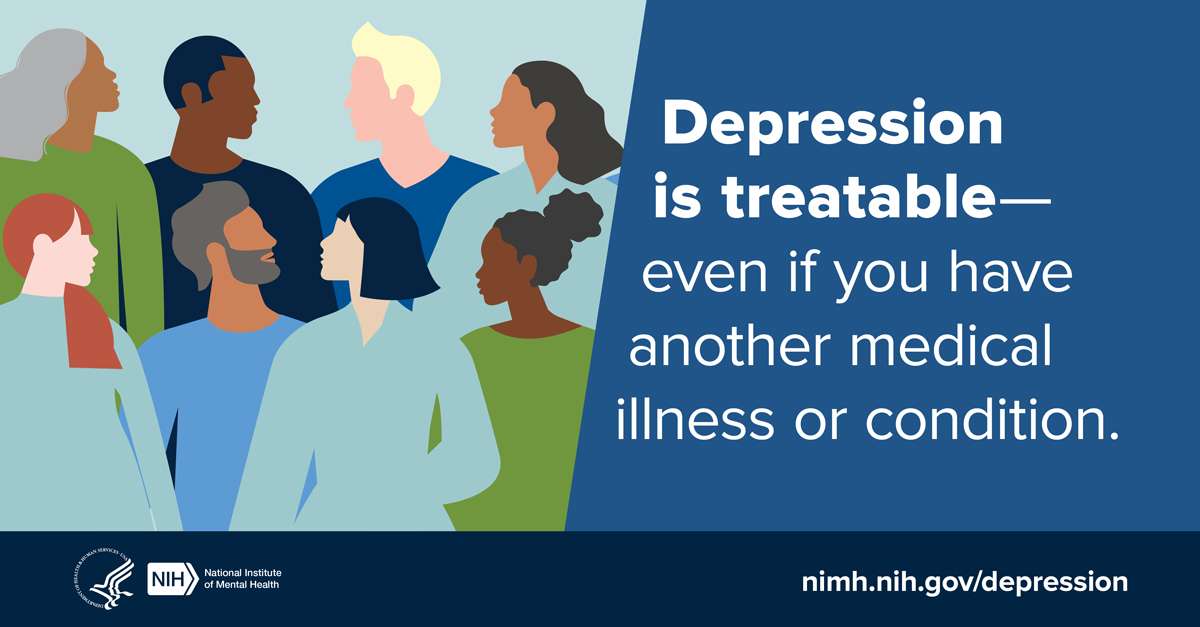We can’t always change the circumstances that cause us stress, and sometimes we can’t even influence them. For example, you can’t always leave a difficult job or get a raise when finances are tight, and there will always be some difficult people you simply need to deal with.
Some stress simply must be managed, and it can be life-changing when you find strategies that help you deal with stress in a way that minimizes its negative effects.
One of these tools, which is becoming more popular, is acceptance and commitment therapy (ACT). This is a form of counseling that is similar to cognitive-behavior therapy, which has been shown by many studies to be effective with stress management.
ACT combines the use of acceptance of stressors in one’s life and mindfulness strategies mixed in different ways with commitment and behavior-change strategies that can increase psychological and emotional flexibility.
History of ACT
This approach was originally named “comprehensive distancing” and was founded in 1982 by psychologist Steven C. Hayes. It has since been fleshed out and worked into a more robust approach to change. Now there are several different protocols for ACT that change depending on the situation and type of stress faced, as well as the setting. For example, there is a brief version of ACT called “focused acceptance and commitment therapy,” also known as FACT.
The goal of ACT (and FACT) is not to eliminate difficult feelings, but to be present with them and accept them, which can create greater comfort with them so that people are able to move beyond the barriers that these feelings create. Acceptance and commitment therapy invites people to open up to unpleasant feelings and learn not to overreact to them or avoid situations where they are invoked. Its therapeutic effect is a positive “upward spiral” of emotion where feeling better leads to a better understanding of the truth.
Principles
ACT commonly employs six core principles to help clients develop psychological flexibility.
- Cognitive defusion: Learning to perceive thoughts, images, emotions, and memories as what they are (words and pictures) rather what they appear to be (threatening events or truths).
- Acceptance: Allowing thoughts to come and go without struggling with them.
- Contact with the present moment: Awareness of the here and now, experienced with openness, interest, and receptiveness.
- The observing self: Learning to observe and react to your behaviors as if they were the behaviors of someone else.
- Values: Discovering what is most important to oneself.
- Committed action: Setting goals according to values and carrying them out responsibly.
Correlational evidence has found that absence of psychological flexibility predicts many forms of psychopathology. A 2005 meta-analysis showed that the six ACT principles, on average, account for 16 to 29 percent of the variance in psychopathology (general mental health, depression, anxiety) at baseline, depending on the measure, using correlational methods.
ACT-Based Strategies
Mindfulness and Meditation
Because the main goal of ACT is to accept one’s present circumstances, become more comfortable with them, and then be empowered to move beyond them with minimal stress, meditation is an extremely helpful tool for this kind of stress.
The practice of mindfulness and meditation can allow you to practice being aware of stressors and then letting go of the need to react. This can minimize the stress you feel as well as the tendency many of us have to overreact to stress we experience when we feel trapped. This can come in the form of rumination, catastrophizing, and other stress-exacerbating habits that many of us engage in whether we’re aware of it or not.
Reappraisal
We can’t always change what we experience, but we can change how we think about these experiences. This is a core belief of ACT.
Changing your thoughts about the stress you experience can come in the form of cognitive restructuring or cognitive reappraisals, where you actively work to choose new ways of viewing the same situation. These views may not be the first thoughts you had on the topic, but they can be just as aligned with the realities of the situation.
For example, when facing a challenge that feels beyond your capabilities (a commonly stressful situation), “I am failing at this,” can be changed to, “I am having a difficult time with this. It’s all part of the process, though, and I’ll get it eventually.” Similarly, “This should not be happening to me,” can be changed to, “We all face challenges, and here’s one of mine. I’ll get through this.”
Deliberate Acceptance
Sometimes stress can be greatly minimized when we give up the fight and trust the process. When we feel we need to struggle against something that may not necessarily be changeable, we can feel overwhelmed with a virtually impossible task. When we accept a situation and let go of our own need to control it (which often is impossible, anyway), this can feel like lifting a weight off our shoulders and can greatly relieve the stress of whatever situation we face.
“Making friends” with the situations we had been fighting can be a liberating process and, interestingly, can help us to move on from feeling “stuck” and “trapped” into a place of recognizing “what is” and what can be done about it.
Choosing Purposeful Action
A primary goal with ACT is to choose an action that can be taken and to move forward in a positive, productive direction. One strategy that can help with this is to increase the positive experiences you have so that you can create an “upward spiral of positivity.” Another is to simply look at the situation you are in (and accept this situation) and then look for options you can choose within this reality rather than trying to change the reality itself by fighting your overall circumstances.
This can be achieved with the help of a therapist, a journaling practice, or talks with a good friend who understands.
A Word From Verywell
Ultimately, ACT-based strategies can be liberating and empowering. Accepting the challenges of life and moving forward can build confidence and inner strength and can help you to move past significant amounts of stress. Practice with this modality can make perfect.
Research hypothesis
The following research questions was addressed:
It could be argued that the hypothesis holding the effect of acceptance and commitment therapy on increasing the PF and reducing the PS of nurses is supported.
Setting and study design
The present study was conducted at Tehran Razi Psychiatric Center with a research population consisting of psychiatric nurses working in the center in 2018. This study is considered as randomized control trial study in terms of data collection method, with a pretest-posttest design on experimental and control groups.
Sample size and study sampling
To obtain the 95% confidence level and power of the test of 0.8% for the required sample size, it is hypothesized that the magnitude of the impact of ACT, as an educational method, on PS and PF of nurses engaged in psychiatric wards in the intervention group, in comparison to the control group, has at least the score of d = 0.7, in the following formula:
$$ 1+mathrm{n}=frac{{left({Z}_{1-frac{a}{2}}+{Z}_{1-beta}right)}^2}{d^{2.}} $$
We computed the sample size as 33 for the intervention group and 33 for the control group. It should be mentioned that according to the previous studies, the standard deviation of PS and PF were calculated to be 14.5 and with the probability of a sample dropout of 10% that was added to the sample size. Therefore, the sample size in each group was considered to be n = 35 (Fig. 1).
$$ n=frac{2{left(1.96+0.84right)}^2}{0.7^2}=32+1 $$
Fig. 1
Flow diagram of the progress through the phases of two-group parallel randomized trial
Full size image
Random allocation
Samples were selected through stepwise random cluster sampling. The hospital where the study was carried out consisted of 23 wards. In each ward, a number of nurses were randomly selected based on the proportion of nurses to the sample size. Of the 84 nurses selected, fourteen were excluded due to lack of inclusion criteria, and 70 remaining nurses were each assigned a number and were randomly divided into experimental and control groups, each consisting of 35 participants. (Fig. 1).
Inclusion and exclusion criteria
Inclusion criteria included having a bachelor’s or higher degree in nursing, at least 2 years of work experience in psychiatric wards, attending intervention sessions based on ACT for the first time, and no history of taking psychiatric drugs in the past and present. On the other hand, exclusion criteria included not completing the questionnaires, absenteeism in more than one intervention sessions, and the occurrence of stressful events during the study. Two of the participants in the experimental group were eliminated due to absence in more than one session.
Intervention procedure
Routine interventions, the experimental group received ACT-based training according to Steven Hayes model in eight two-hour sessions conducted by an ACT therapist, whereas the control group merely received routine interventions such as stress control, life skills, and anger control workshops, which are normally held by the educational deputy of the center for the staff. After obtaining informed consent and providing sufficient explanations, prior to the intervention sessions, and a month after the last session, demographic information, PS scale, and Acceptance and Action (2nd Edition) questionnaire were completed by the participants. The control group participants completed the questionnaires in both stages (based on the schedule of the experimental group). The questionnaires were handed out to the participants after selecting the research sample (based on inclusion criteria) and providing sufficient explanation.
Study instruments and measures
Three questionnaires were used to collect the required data:
Demographic information questionnaire
In this section, demographic information including age, sex, marital status, level of education, employment status and work duration was questioned.
Perceived stress scale (PSS)
The questionnaire was developed by Cohen et al. In 1983 and contained 14 questions to measure perceived general stress during the past month, as well as the thoughts and feelings about stressful events, and how to control, overcome, and cope with strain and experienced stresses [35]. The highest score that an individual can obtain in this questionnaire is 56, and the lowest score is zero. In case an individual obtains a score close to 56, it means that his or her PS has been high in the past month and vice versa. Cohen et al. (1983) measured the validity of PSS by calculating its correlation coefficient with semiotic dimensions, which was ranged from 0.52 to 0.76 [35], while Alsouni and Latif (2014) calculated its internal consistency by Cronbach’s alpha to be 0.74 [36]. In this study, the internal consistency of the questionnaire was calculated by Cronbach’s alpha to be 0.88, which is at an appropriate range.
Acceptance and action questionnaire- (AAQ-II)
This questionnaire was developed by Bond et al. (2007), and it is an edition of the original questionnaire (AAQ-I) created by Hayes (2000). The questionnaire assesses a construct associated with diversity, acceptance, experiential avoidance, and PF. It evaluates immobility and experiential avoidance, acceptance and action. AAQ-II items are rated on a 7-point Likert scale ranging from 1 (does not apply to me at all) to 7 (always applies to me). The highest score one can obtain in this questionnaire is 70 and the lowest score is 10. A high score indicates more experiential avoidance, while a low score reflects more acceptance and action. Bond et al. obtained the second version of Acceptance and Action Questionnaire using the Cronbach coefficient 0.81–0.88 [37]. In this research, the internal consistency of the questionnaire was calculated by Cronbach’s alpha to be 0.83.
Statistical analysis
In order to unify the groups, the data regarding two participants in the control group were randomly selected and excluded from the calculations, and the resulting data with 35 individuals in experimental and control groups were analyzed using SPSS version 23 software. We carried out a one-way ANOVA to compare the relationship between demographic variables and PF and PS for the control and intervention groups. We also conducted Single-variable covariance for testing the effect of ACT on PF and PS of psychiatric nurses. The findings of Levene’s test on the homogeneity of error variances were not significant (p ≥ 0.05). In most studies in the statistical analysis considering the mean of two or several societies, the distribution of test statistics is addressed by assuming equal variances. Therefore, before applying the mean tests, it is necessary that the equality of variances in societies will be assessed by Levene’s Test. The Kolmogorov-Smirnov test represented the normality of data distribution (p ≥ 0.05).



